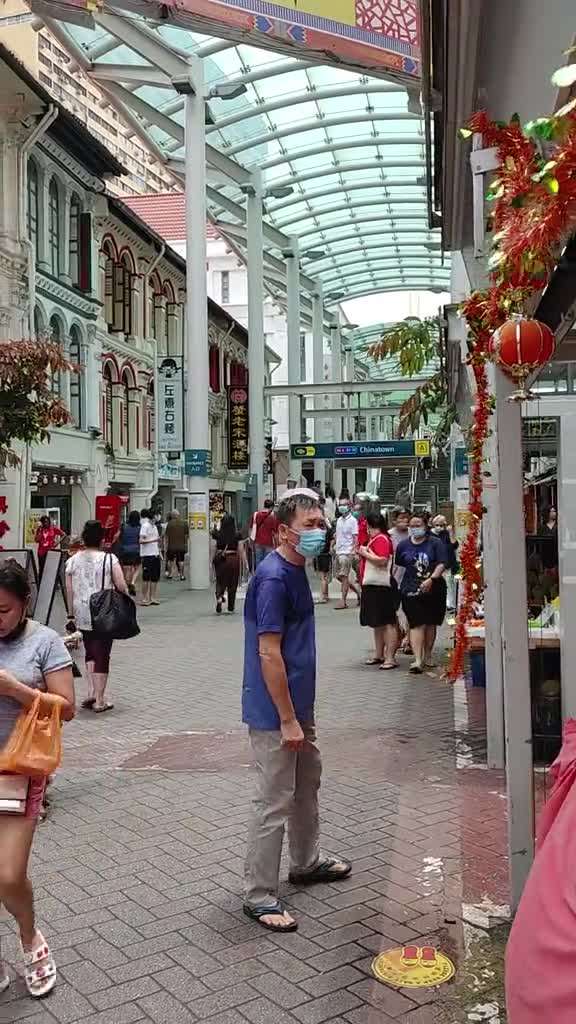Museums, Theaters, Architecture, Phuket

Removed from Unnamed collection
Phuket Big Buddha 
Big Buddha Phuket is a 45-meter-tall white marble statue visible from anywhere in the southern part of Phuket. It is probably at the top of everyone’s ‘Must-Do in Phuket‘, and for a good reason. The views from up there are breathtaking. The statue is built with people’s donation and is still under construction. If you feel like doing something to help to finish the broad base of the Buddha, you can sponsor a piece of white marble for 300 to 1,000 baht depending on the size.
Phuket Big Buddha started in 2002 as the foundation stone was laid by General Phijit Kulawanich, Privy Councilor on May 22, 2002. The official name is ‘Phraphutthamingmongkhol-akenagakhiri Buddha’ that translates as “Happiness on top of Nakerd mountain” https://www.phuket101.net/phuket-big-buddha/
Map

Removed from Unnamed collection
Samet Nangshe Viewpoint 
Samet Nangshe is a superb panoramic viewpoint in Phang Nga Bay. It’s a little far outside Phuket island, but if you have a car or a big bike, it is worth the drive. From up there, you can admire the fantastic limestone formations of Phang Nga Bay, but it requires a good deal of effort. You need to drive 25 kilometres past the Sarasin bridge that connects Phuket to the mainland, but the drive in the backcountry on Thailand is fantastic. The road is surrounded by trees and palm trees all the way, and when you approach your destination, you are rewarded by the jaw-dropping Nangshe bay which is beautiful, even from the road.
There use to be a serious 20 minutes climbing (and in a way there still is), but a pickup truck will be waiting for you to drive you up there regularly. We recommend you to use it. 90 baht is definitely worth the energy saving! Note that if you choose not to use the pickup truck, there is still an entry fee to go up.
Once you reach the top, don’t expect a peaceful, solitary hilltop as there is always a little crowd of avid photographers, amateurs and professional. Families and teens are all over the place taking all kinds of creative poses for their selfies. It’s a real Instagram playground. https://www.phuket101.net/samet-nangshe-viewpoint/
Map
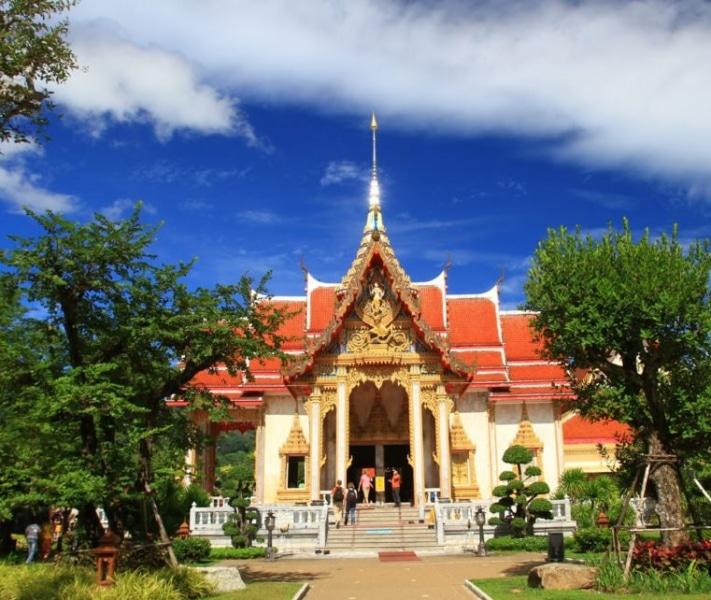
Removed from Unnamed collection
Chalong Temple 
Wat Chalong, the largest, most revered and most visited Buddhist temple in Phuket was built at the beginning of the 19th century, 1837 according to some sources. Chalong Temple (officially Wat Chaiyatararam) is one of the Must-See places in Phuket, together with the nearby Big Buddha of Phuket as they are relatively close to each other.
The tallest building on the grounds of Wat Chalong is a 60 meters tall stupa (chedi) sheltering a bone fragment of Lord Buddha. Walls and ceilings of the temple are decorated with beautiful painting retracing the most significant steps of Buddha’s life. Each floor is also full of large donated golden statues.
Wat Chalong Chedi is built on three floors so feel free to climb all the way to the top floor terrace to get a beautiful bird view on the entire temple grounds. Few more steps will lead you to a glass display where the fragment of bone can be contemplated. https://www.phuket101.net/wat-chalong/
Map
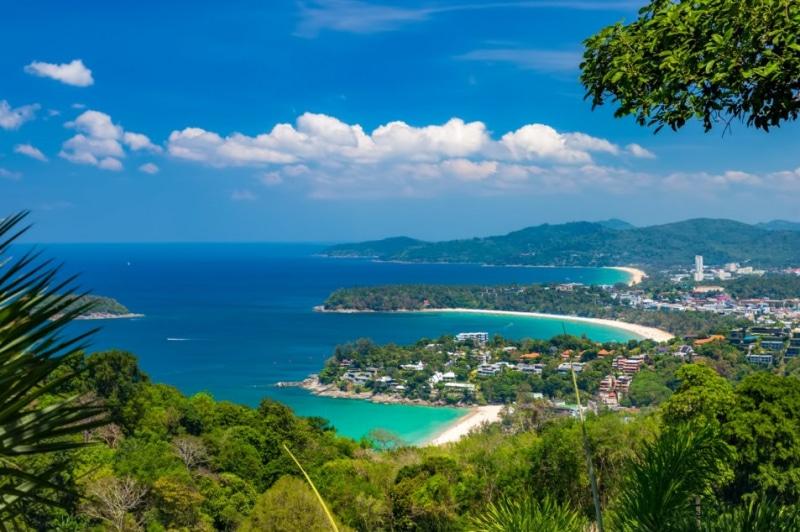
Removed from Unnamed collection
Karon Viewpoint 
Karon Viewpoint Thai name is Kho Sam Haad, which means ‘The Hill of the Three Beaches’, and once you reach the place, you will see exacly that: three beaches. If this is your first trip to Phuket, you probably will stop a few minutes at this popular and beautiful panoramic landmark to admire the view from the top of the hill. You really can see three magnificent bays from up there.
The closest and smallest one is Kata Noi Beach. A bit further is the beautiful Kata Beach with its island ‘Koh Poo’ which means Crab Island, and in the far, the very long Karon Beach.
With such a strategic location on the side of the road leading to the famous Promthep Cape, everyone stops for a selfie on their way to Nai Harn. Some visitors rest a bit longer in the shade of the Gazebo to enjoy some drinks or snacks bought at the tiny shops located a few steps down below. Some have a chat with the now well-known reggae guy always hanging there selling some necklaces and accessories. https://www.phuket101.net/karon-viewpoint/
Map
Explore more places related to this search:
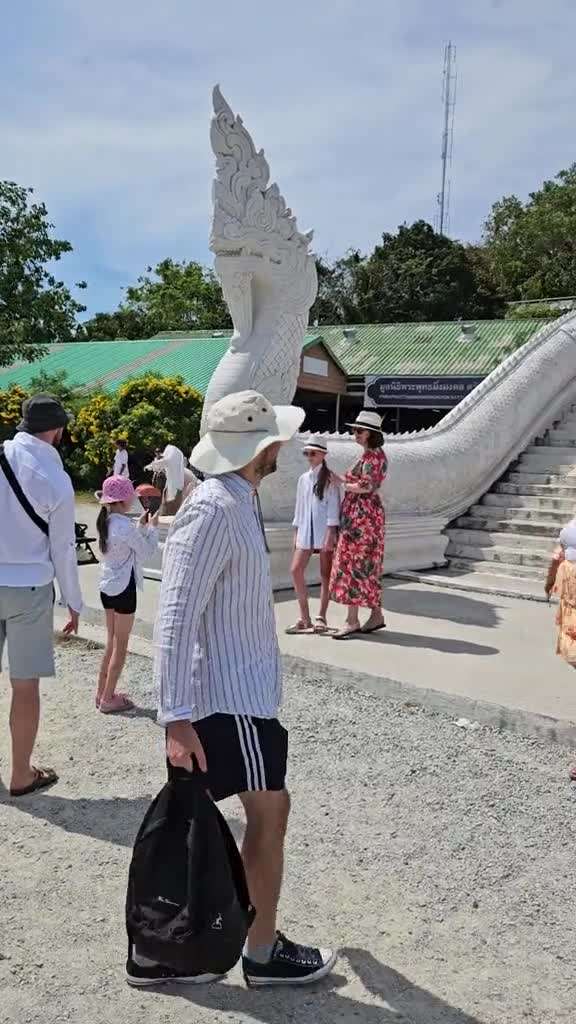
Removed from Unnamed collection
Big Buddha 
2 January 2024
Большой Будда на горе в Phuket. Честно признаться, если кто-то хоть раз видел одного Большого Будду, то он видел их все сразу, потому что не сказать, чтобы они блистали разнообразием. Впрочем, с горы открывается красивый вид на залив
Map
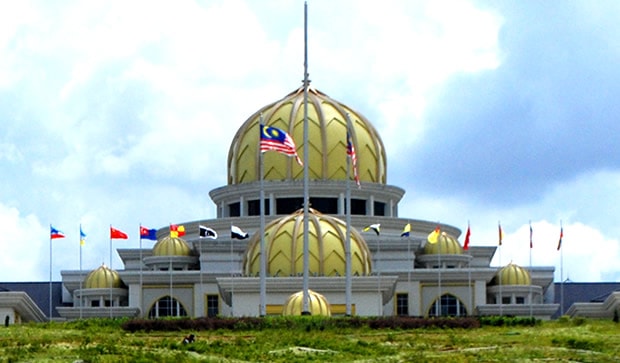
Removed from Unnamed collection
National Palace 
Istana Negara (National Palace) is the official residence of the Yang DiPertuan Agong who is the head of state of Malaysia. The New palace which was opened in 2011 is located at Jalan Duta, replaces the old Istana Negara. http://www.visitkl.gov.my/visitklv2/index.php?r=column/cthree&id=57&place_id=991
Map
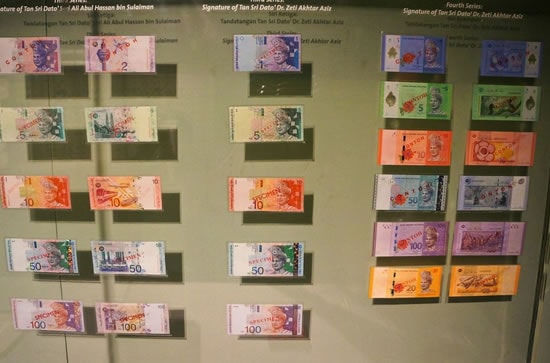
Removed from Unnamed collection
Bank Negara Museum & Art Gallery 
A museum on money established by the country’s central bank, the Bank Negara Malaysia located in the Sasana Kijang Complex. Here you can learn all about money through interactive and computerised games, as well as interesting facts and information on money.
There is an Economics Gallery, Islamic Finance Gallery, Numismatics Gallery and Children’s Gallery. You will also be able to view the Central Banks art collection of renowned Malaysian contemporary artists in the Art Gallery. Guided tours can also be arranged for groups of visitors from schools, universities and non-profit organisation. http://www.visitkl.gov.my/visitklv2/index.php?r=column/cthree&id=106&place_id=888
Map
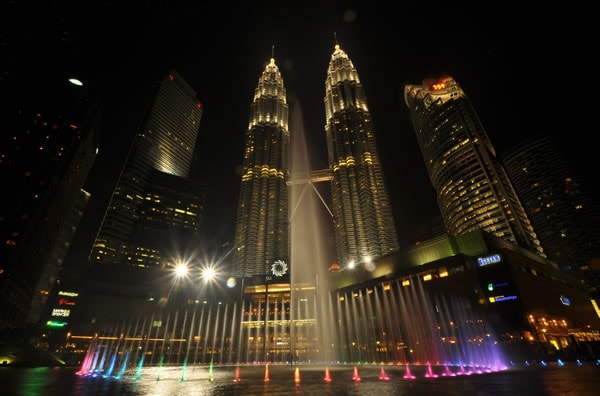
Removed from Unnamed collection
Musical Fountain 
This musical fountain is located at the esplanade outside Suria KLCC. It is programmed to provide 150 magical dramatic animations. The total effect is a light hearted and gregarious atmosphere. http://www.visitkl.gov.my/visitklv2/index.php?r=column/cthree&id=50&place_id=700
Map

Removed from Unnamed collection
Royal Museum 
Want to know what it’s like to live in a palace? The Royal Museum is possibly the best place to see and experience the royal way of life in an Asian palace.
The Royal Museum opened its doors on 1 February 2013 and is located in the old National Palace which was the official residence of the King and Queen of Malaysia. The old National Palace has now been converted to a museum and is open to the public. http://www.visitkl.gov.my/visitklv2/index.php?r=column/cthree&id=106&place_id=1072
Map

Removed from Unnamed collection
Royal Malaysian Air Forces Museum 
The museum provides information on the history of the RMAF which was formed in 1958. RAF Air Commodore AVR Johnstone was assigned as Advisor to the Malaysian Government and became the first Chief of the RMAF. http://www.visitkl.gov.my/visitklv2/index.php?r=column/cthree&id=106&place_id=891
Map

Removed from Unnamed collection
Sukhumvit Road in Bangkok 
Bangkok’s Sukhumvit Road and the surrounding district is one of the best known localities in the Thai capital. Unlike some districts in the city you won’t find beautiful temples or palaces here; Sukhumvit Bangkok is better known for its Westernised feel and consists of bars, restaurants and shopping malls that you’ll find alongside sois that are filled with even more bars (salubrious and otherwise) and massage parlours. The sex trade is difficult to ignore with prostitutes almost everywhere you look, and you wouldn’t come to Sukhumvit Road for the traditional Thai culture, but even so, it’s one of the most visited neighbourhoods in the city. So why the interest? Read on to discover our recommendations for amazing places to visit on Sukhumvit Road in Bangkok. https://bangkokattractions.com/sukhumvit-road-bangkok/
Map
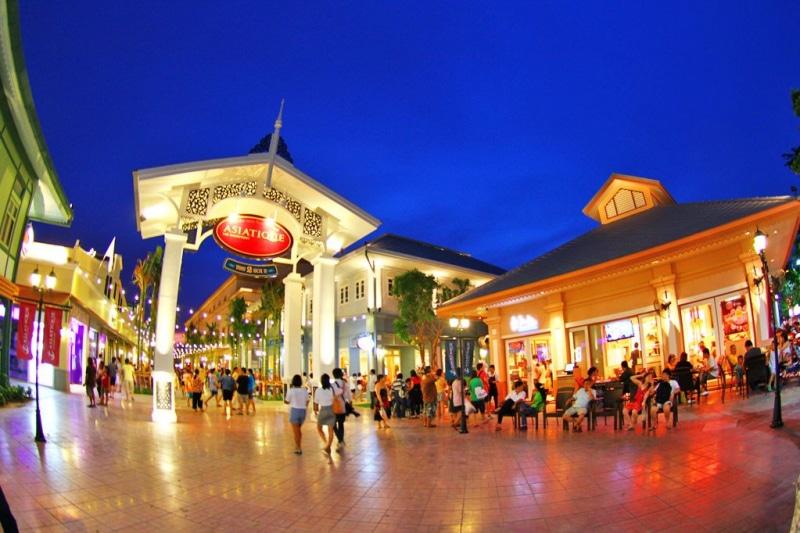
Removed from Unnamed collection
Asiatique The Riverfront 
Asiatique successfully combines 2 of the most popular shopping experiences in the city: a night bazaar and a mall. Around 10 minutes downriver from Saphan Taksin BTS station, this once-bustling international trade port transformed into a huge replica warehouse complex with over 1,500 boutiques and 40 restaurants.
Open from 5pm, spending an evening here is no problem: you’ll have good fun browsing the boutiques, picking up gifts or something for yourself. You’re also guaranteed to find something you’d like to eat and if this isn’t enough entertainment, nightly highlights range from Calypso ladyboy cabarets to classic Thai puppet shows. http://www.bangkok.com/shopping-mall/asiatique.htm
Map
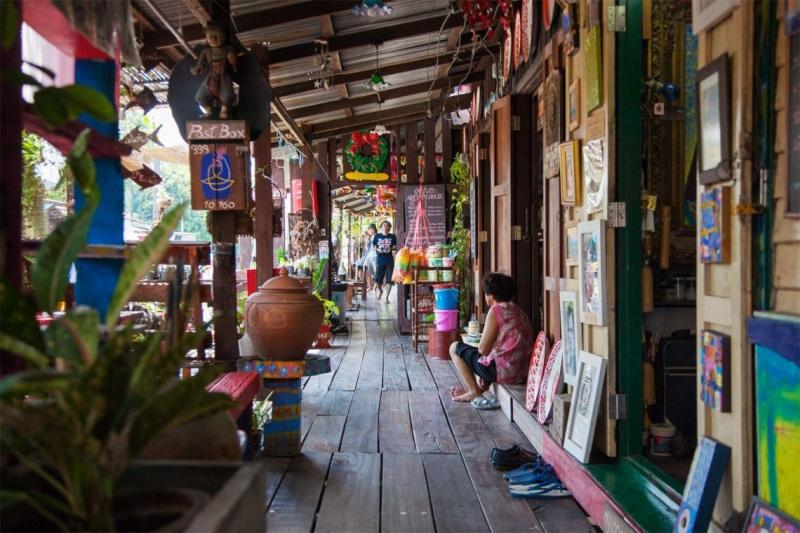
Removed from Unnamed collection
The Artist House 
The Artist's House (The Artist's House) is a centuries-old house turned gallery in Thonburi, across the Chao Phraya River. Owned by Khun Chumpol Akkapantanon, it’s an excellent spot to escape from the city’s modern buildings and hectic traffic for a day.
Baan Silapin (and its neighbourhood) dates back to the 1800s. A boardwalk leading to the gallery is lined with shops, cafes, local restaurants, and a temple. You can also spot many unusual and human-sized statues painted in white, red and black sitting by the water.
The Artist's House has a tall, white stupa dating back to the Ayutthaya period standing in the backyard. You can see plenty of traditional paintings, masks and, puppets throughout the building. It’s most popular for hosting traditional Thai puppet shows, where intricately-made puppets are manipulated by artists dressed in black.
Shows take place on a small wooden stage every day at 2pm, except Wednesdays. It’s a good idea to call in advance as the theatre sometimes performs in other parts of the city, usually during special events. http://www.bangkok.com/magazine/artist-house.htm
Map
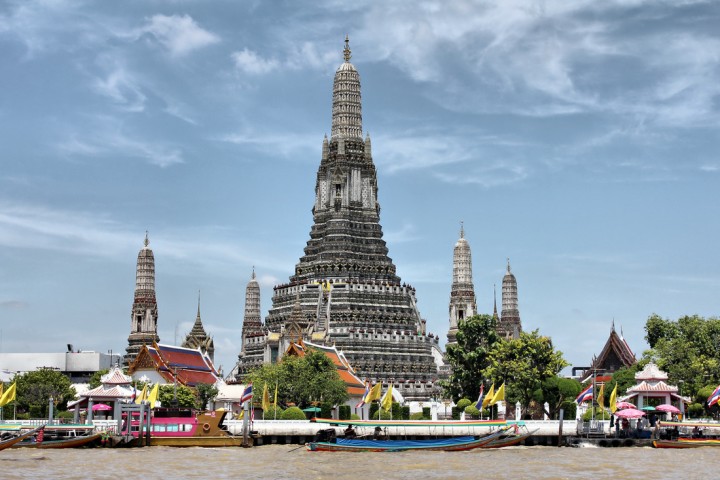
Removed from Unnamed collection
Wat Arun 
Wat Arun, locally known as Wat Chaeng, is situated on the west (Thonburi) bank of the Chao Phraya River. It is easily one of the most stunning temples in Bangkok, not only because of its riverside location, but also because the design is very different to the other temples you can visit in Bangkok. Wat Arun (or temple of the dawn) is partly made up of colourfully decorated spires and stands majestically over the water.
Wat Arun is almost directly opposite Wat Pho, so it’s very easy to get to. From Saphan Taksin boat pier you can take a riverboat that stops at Pier 8. From here, a small shuttle boat takes you from one side of the river to the other. http://www.bangkok.com/attraction-temple/wat-arun.htm
Map
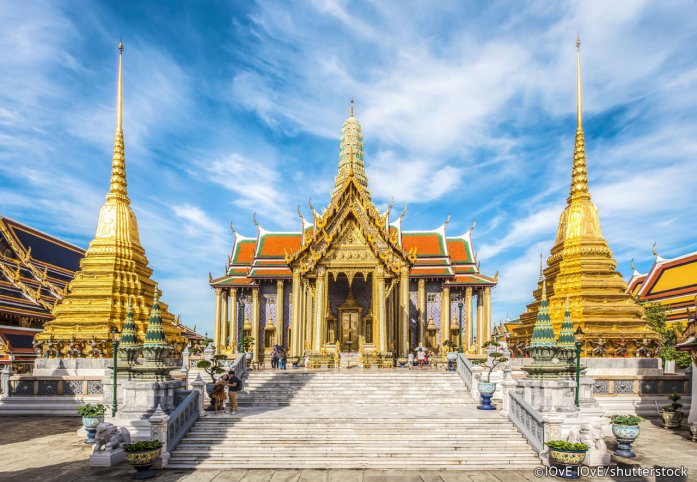
Removed from Unnamed collection
The Grand Palace 
The dazzling, spectacular Grand Palace is undoubtedly the most famous landmark in Bangkok. It’s one must-see sight that no visit to the city would be complete without. It was built in 1782 and for 150 years was the home of the Thai King, the Royal court and the administrative seat of government.
The Grand Palace of Bangkok is a grand old dame indeed, that continues to have visitors in awe with its beautiful architecture and intricate detail, all of which is a proud salute to the creativity and craftsmanship of the Thai people. Within its walls were also the Thai war ministry, state departments, and even the mint. Today, the complex remains the spiritual heart of the Thai Kingdom. http://www.bangkok.com/attraction-palace/grand-palace.htm
Map

Removed from Unnamed collection
Wat Saket 
Wat Saket in Bangkok Old Town is an Ayutthaya-era shrine with a gleaming gold chedi in Bangkok. Also called the Golden Mount, it occupies an 80-metre-tall man made hill that was built during the reign of King Rama III. The temple welcomes worshippers year-round, though it’s busiest during its annual temple fair in November, during Loy Krathong. The temple grounds have mature trees and typical Buddhist structures such as a main prayer hall, ordination hall and library.
Wat Saket was the capital's crematorium and the dumping ground for some 60,000 plague victims in the late-18th century. At the base of the Golden Mount, you’ll find an unusual cemetery covered in vines and overgrown trees. It emits a rather spooky out-of-era vibe. Once you arrive at the top of Wat Saket, you’ll be surrounded by a wall of bells and panoramas of Bangkok Old Town. http://www.bangkok.com/attraction-temple/wat-saket.htm
Map

Removed from Unnamed collection
Phra Nakhon Si Ayutthaya 
The charm of ancient city of Ayutthaya Thailand continues to gain tourists’ attention as a historic attraction. Not only the old moments but also the new things that shine.
When it comes to historical buildings, Ayutthaya travel is well known for temples and palaces. But in addition to that, a variety of food is also another magnet. You can find fresh river prawns, fish, noodles, and even the never-miss dessert like cotton candy wrap. So, remember to plan your eating trip whenever you visit Ayutthaya.
Ayutthaya is one of Thailand’s historical and majestic highlights. The capital of Thailand, then known as the Kingdom of Ayutthaya, Phra Nakhon Si Ayutthaya was a glorified as one of the biggest cities in Southeast Asia and a regional power for 417 years. https://au.tourismthailand.org/About-Thailand/Destination/Ayutthaya
Map
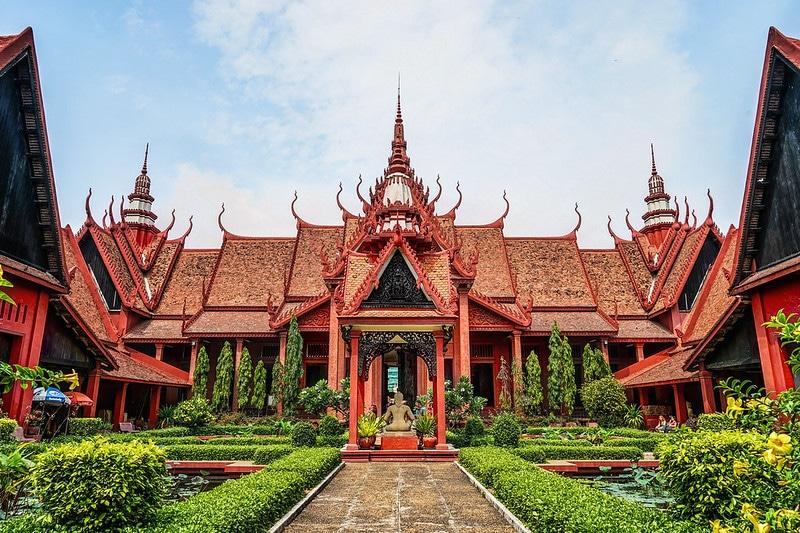
Removed from Unnamed collection
National Museum of Cambodia 
The National Museum of Cambodia houses one of the world's greatest collections of Khmer cultural material including sculpture, ceramics and ethnographic objects from the prehistoric, pre-Angkorian, Angkorian and post-Angkorian periods.
The main activities of the National Museum of Cambodia include exhibiting, safeguarding and promoting understanding of Cambodia’s cultural and artistic treasures. Keeping objects safe and working to ensure the repatriation of pieces stolen from Cambodia are important aspects of the museum’s work, particularly as looting and illicit export of cultural material are a continuing concern. In addition, the Museum strives to engage its visitors through its exhibitions and to fulfil its role as an integral part of the community. The Museum believes that Cambodia’s cultural heritage is of great value and can provide a source of pride and identity to the Cambodian people who have lost so much in recent decades. The availability of multilingual Museum tour guides and Publications, as well as the Museum’s public library, all serve to increase the accessibility of the collection both for local and international visitors. http://www.cambodiamuseum.info/museum_history.html
Map
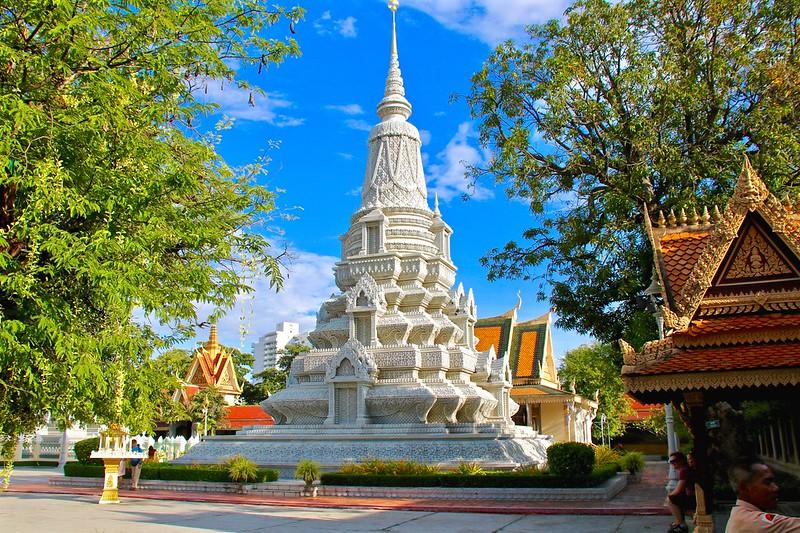
Removed from Unnamed collection
Silver Pagoda 
Wat Preah Keo Morakot (Silver Pagoda) is located in the southern portion of the Royal Palace complex. The pagoda was formerly known as Wat Uborsoth Rotannaram because it is where the King worshiped, prayed and practiced every Buddhist Silas Day. In the additional, the royal family and officials also held Buddhist ceremonies there.This pagoda has no monks. However, this Majestic King Norodom Sihanouk lived there for one year when he entered the monkhood on July 31, 1947. Because the pagoda has no monks, visitors usually refer to it as Preah Vihear Preah Keo Morakot. When the King celebrates Buddhist ceremonies, monks from other pagoda such as Wat Unaloam and Wat Botumvattey are invited to attend the ceremonies. Preah Vihear Preah Keo Morakot was built between 1892 and 1902, during the reign of King Norodom, but at that time it was constructed of wood and brick. Its design is base on Cambodian architectural style. Then Banhchos Khan Seima ceremony was held on Feb 5, 1903.
There are 1,650 art objects housed in this temple. Most of them are Buddha figures. They are made of gold, silver, bronze and other valuable materials. Some are decorated with diamonds. They are gifts from the King, the royal family, dignitaries and other people who worship at Preah Vihear Preah Keo Morakot, where they pray for peace and prosperity, for happiness and for the preservation of Cambodian cultural heritage for the next generation. In front of the throne, site a Buddha statue made of gold, weighing 90 kilograms (about 200 pounds) and decorated with 2,086 diamonds. The biggest diamond is on the crown. It is 25 millimeters. This statue was commissioned in 1904 by King Sisowath, following the suggestion of King Norodom. King Norodom said, after his body was cremated the gold casket should be melted to make Buddha statue representing Preah Srei Araymetrey. This Buddha statue is named Preah Chin Raingsei Rachik Norodom. https://www.tourismcambodia.com/travelguides/provinces/phnom-penh/what-to-see/370_silver-pagoda.htm
Map
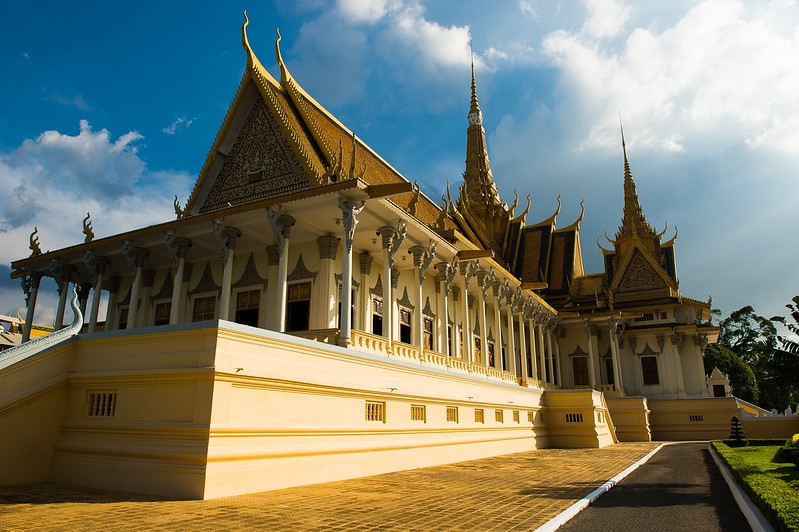
Removed from Unnamed collection
Royal Palace of Cambodia 
Cambodia’s Royal Palace complex was begun by King Norodom I (ruled 1860-1904) in 1886, when the capital was moved to Phnom Penh. Most buildings were completed before World War I, with involvement by French administrators and Thai designers and architects. French influence can be seen in the formal gardens which enhance the palace, and there are some European-style buildings on the grounds. Now Royal Palace is a home to His Majesty Preah Bat Samdech Preah Sihamoni, King of Cambodia.
Royal palace has four gates. The eastern Victory Gate leads directly to the entrance of the throne hall and is used only by royalty and VIPs. The northern or funeral gate is only opened after the death of a monarch. After being embalmed, the monarch’s body is kept in state at the palace for three months, with the face hidden by a one-kilogram solid gold mask, before being taken out via this gate. The west or executing gate was used by condemned prisoners exiting the palace to be killed. The southern gate is reserved for use by commoners and it is through this gate the public reaches the Silver Pagoda.
At the top of palace’s throne hall, note the four pale, almost clown-like faces, which represent the all-seeing king. The hall itself is painted vivid yellow, a symbol of Buddhism, and white, for Hinduism, the two main faiths of Cambodia until they were combined into one by Jayavarman VII in the 12th century. The central door of the five at the front of the throne hall are reserved for royalty and VIPs. Inside, note the 1913 ceiling mural telling the story of the Ramayana. The thick carpet supplied by China in 1993 matches the lotus-bud floor tiles. http://www.yourphnompenh.com/royal-palace-and-silver-pagoda/
Map

Removed from Unnamed collection
Angkor Wat 
There are few places anywhere on earth to match the splendour of Angkor Wat. The temple is one of the largest monuments to religion ever built and is truly one the wonders of the world. Believed to have been constructed as a temple and mausoleum for King Suryavarman II at the peak of the Khmer empire in the first half of the 12th century, Angkor Wat is probably the best-preserved of the Angkorean temples. As with other Angkorean temples and walled cities such as Angkor Thom, the central theme of Khmer architecture revolved around the idea of the temple-mountain. https://www.tourismcambodia.com/travelguides/provinces/siem-reap/what-to-see/294_angkor-wat.htm
Map

Removed from Unnamed collection
Angkor Thom 
Angkor Thom is undeniably an expression of the highest genius. It is, in three dimensions and on a scale worthy of an entire nation, the materialization of Buddhist cosmology, representing ideas that only great painters would dare to portray.
Angkor Thom, the last capital of the Khmer Empire, was a fortified cit enclosing residences of priest, officials of the palace and military, as well as buildings for administering the kingdom. These structures were built of wood and have perished but the remaining stone monuments testify that Angkor Thom was indeed a "Great City" as its name implies. Temples inside the walls of the city described are Bayon, Phimeanakas, Baphuon, Terrace of the Elephants, Terrace of the Leper King, Prah Palilay, Tep Pranam and Prasat Suor Prat.
Symbolically, Angkor Thom is a microcosm of the universe, divided into four parts by the main axes. The temple of the Bayon is situated at the exact center of the axes and stands as the symbolical link between heaven and earth. The wall enclosing the city of Angkor Thom represents the stonewall around the universe and the mountain ranges around Meru. The surrounding moat (now dry) symbolizes the cosmic ocean. https://www.tourismcambodia.com/attractions/angkor/angkor-thom.htm
Map
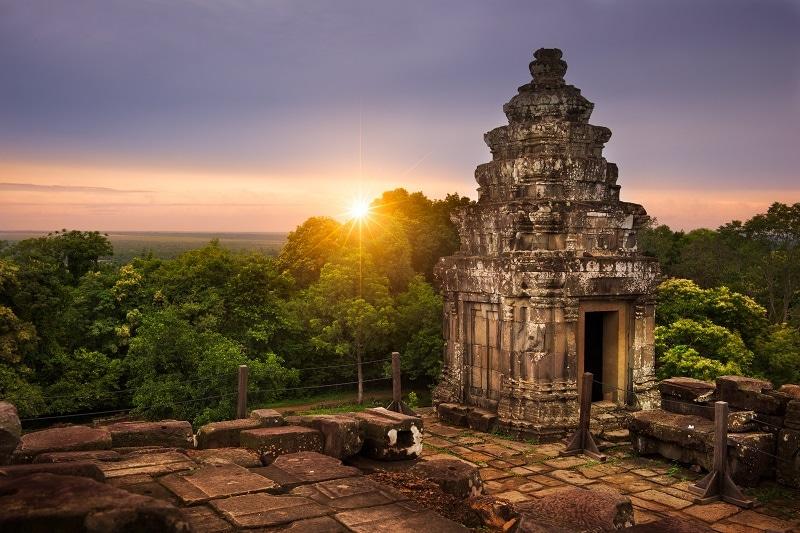
Removed from Unnamed collection
Phnom Bakheng Hill 
It is a testimony to the love of symmetry and balance which evolved its style....in pure simplicity of rectangles its beauty is achieved. It is a pyramid mounting in terraces, five of them ...Below Bak-Keng lays all the world of mystery, the world of the Khmer, more mysterious ever under its cover of impenetrable verdure.
Phnom Bakheng is located 1,30 meters (4,265 feet) north of Angkor Wat and 400 meters (1,312 feet) south of Angkor Thom.
Enter and leave Phnom Bakheng by climbing a long steep path with some steps on the east side of the monument (height 67 meters, 220 feet) In the 1960 this summit was approached by elephant and, according to a French visitor, the ascent was "a promenade classic and very agreeable.
Arrive at the summit just before sunset for a panoramic view of Angkor and its environs. The golden hues of the setting sun on this vista are a memorable sight. https://www.tourismcambodia.com/attractions/angkor/bakheng-mountain.htm
Map
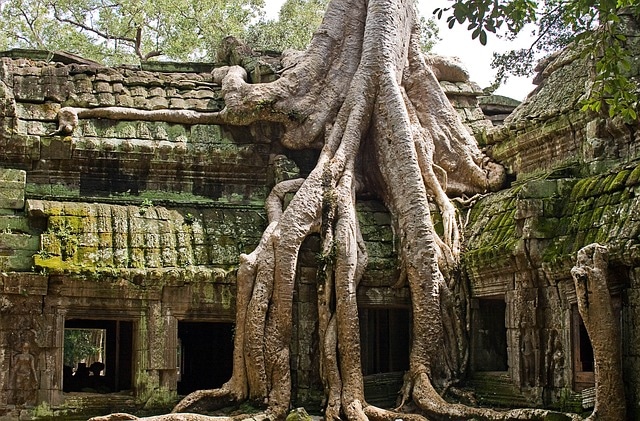
Removed from Unnamed collection
Ta Prohm Temple 
Shrouded in dense jungle the temple of Ta Prohm is ethereal in aspect and conjures up a romantic aura. Fig, banyan and kapok trees spread their gigantic roots over stones, probing walls and terraces apart, as their branches and leaves intertwine to form a roof over the structures. Trunks of trees twist amongst stone pillars. The strange, haunted charm of the place entwines itself about you as you go, as inescapably as the roots have wound themselves about the walls and towers', wrote a visitor 40 years ago.
Ta Prohm is among the largest of the monuments in the Angkor complex, the inscription gives an idea of the size of the temple. The complex included 260 statues of gods, 39 towers with pinnacles and 566 groups of residences. Ta Prohm comprises a series of long low buildings standing on one level, which are enclosed by rectangular laterite wall (600 by 1,000 meters, 1,959 by 3,281 feet). Only traces of the wall are still visible. The center of the monument is reached by a series of towers connected with passages. This arrangement forms a ' sort of sacred way into the heart of the monument’; three-square galleries enclose the area. https://www.tourismcambodia.com/attractions/angkor/ta-prohm.htm
Map

Removed from Unnamed collection
Banteay Srei 
The tenth century temple of Banteay Srei is renowned for its intricate decoration carved in pinkish sandstone that covers the walls like tapestry.
Banteay Srei is an exquisite miniature; a fairy palace in the heart of an immense and mysterious forest; the very thing that Grimm delighted to imagine, and that every child's heart has yearned after, but which mature years has sadly proved too lovely to be true. And here it is, in the Cambodian forest at Banteay Srei, carved not out of the stuff that dreams are made of, but of solid sandstone. https://www.tourismcambodia.com/attractions/angkor/banteay-srei.htm
Map

Removed from Unnamed collection
Kota Iskandar Johor 
Kota Iskandar, Johor State Administrative Centre was opened in April 2009 and is now one of the must see places in Johor. Inspired by Moorish-Andalusian and Johor Malay designs and motifs, Kota Iskandar is Malaysia’s first Experiential Parliament where visitors through our guided tours will be allowed the chance to enter Johor’s beautiful state parliament hall and immersed in Johor’s rich culture and history while understanding the symbolisms and abstract interpretations in true style and splendour of Kota Iskandar- Johor’s Living Legacy. http://www.malaysia.travel/en/jp/places/states-of-malaysia/johor/kota-iskandar?page=1
Map

Removed from Unnamed collection
National Museum of Singapore 
If you have time to visit only one place to learn about the history and culture of Singapore, this is probably it. The National Museum of Singapore tells you the intriguing story of this country in a manner that is both fun and rewarding. Imagine standing in the midst of a vast darkened space surrounded by a massive video montage showing everyday life in Singapore while a rousing symphony plays in the background. That’s just a taste of the immersive experience you can expect here.
The museum hosts a dynamic range of events throughout the year—from art installations and festivals to performances and film screenings—in addition to presenting exhibitions involving historically and culturally important collections of artifacts. One of the latest immersive art installations – Story of the Forest by teamLab allows visitors to experience the treasured collections of the Museum being brought to life through a spectacular digital presentation. http://www.visitsingapore.com/see-do-singapore/history/history-museums/national-museum-of-singapore/
Map

Removed from Unnamed collection
Clarke Quay 
Clarke Quay and the surrounding Riverside area presents Singapore’s most exciting nightlife scenes, as well as a handful of excellent restaurants good for dining by the waters' edge any time of day. Lining the two riverbanks just upstream from the administrative and financial districts, old colonial shop-houses and moored Chinese junks of Clarke Quay and Boat Quay have been converted into chic pubs, restaurants and nightclubs. http://www.singapore-guide.com/area-guides/clarke-quay-and-riverside.htm
Map

Removed from Unnamed collection
MINT Museum of Toys 
MINT Museum of Toys houses a world-class collection of vintage toys and collectible items in an international award-winning contemporary building on 26 Seah Street.
Since its inauguration, the museum has expanded its collection, amassing over 50,000 items, 8000 of which are on display in the museum. The toys and items hail from over 40 countries and range in date from the 1840s to 1970s. These are displayed across the rooftop, basement and 4 thematic levels of the museum: Outerspace, Characters, Childhood Favourites and Collectables.
The collection is made up of various key collections, including Batman, Dan Dare, Japanese character and space-related toys, and collectibles. In addition to toys, the museum houses a collection of confectionary vintage tin boxes, large-item displays, such as Mobo horses and pedal cars, as well as original enamel advertising signs. Over the years, these have been incorporated into various exhibitions and programs run by the museum, serving as windows into the past as well as inspirations for the present.
Today, the MINT Museum of Toys serves diverse and expanding audiences, including tourists, families, collectors, artists, and students. It continues to fascinate and inspire the imaginations of audiences, taking them on a journey of rediscovery to rekindle that Moment of Imagination and Nostalgia with Toys (MINT). https://emint.com/
Map
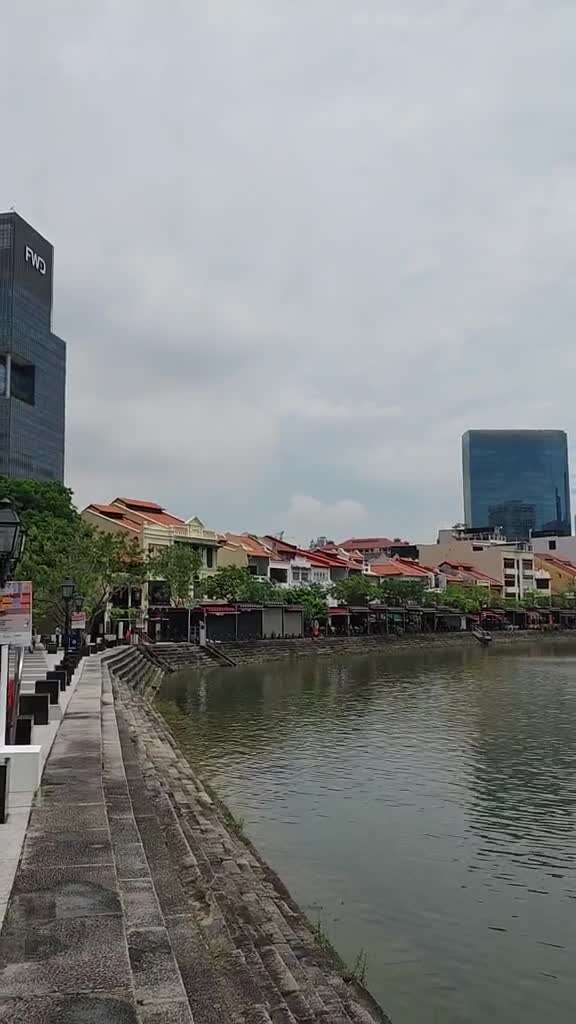
Removed from Unnamed collection
Архитектура и улицы города 
14 April 2022
Улицы и благоустройство. В Сингапуре все, конечно, по последнему слову урбанистики. Есть остатки старой архитектуры в центре города, то что осталось от былого Сингапура. Но увы, совсем немного ... вокруг одни небоскребы и непонятно, где ты, в Сиднее, Дюссельдорфе или Гуанджоу китайском
Map
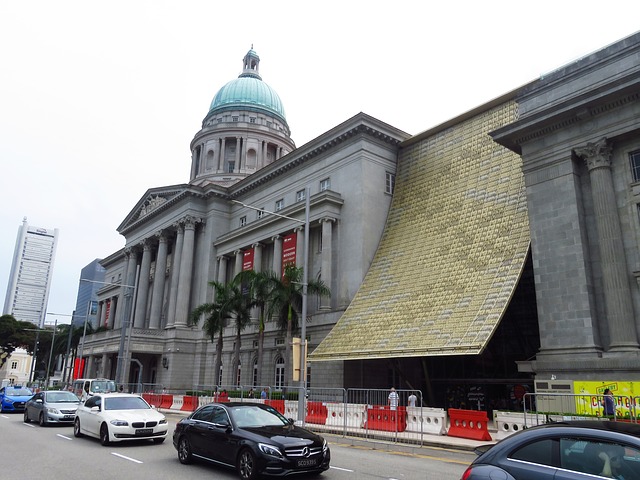
Removed from Unnamed collection
National Gallery Singapore 
Situated in Singapores Civic District, the Gallery consists of two national monuments, the former Supreme Court Building and City Hall, and has a combined floor area of 64,000 square metres, making it the largest visual arts venue and largest museum in Singapore https://www.nationalgallery.sg/
Map

Removed from Unnamed collection
Sri Mariamman Temple 
Located in Chinatown, the Sri Mariamman Temple dates back to 1827 and is the oldest Hindu temple in Singapore. http://www.visitsingapore.com/see-do-singapore/culture-heritage/places-of-worship/sri-mariamman-temple/
Map
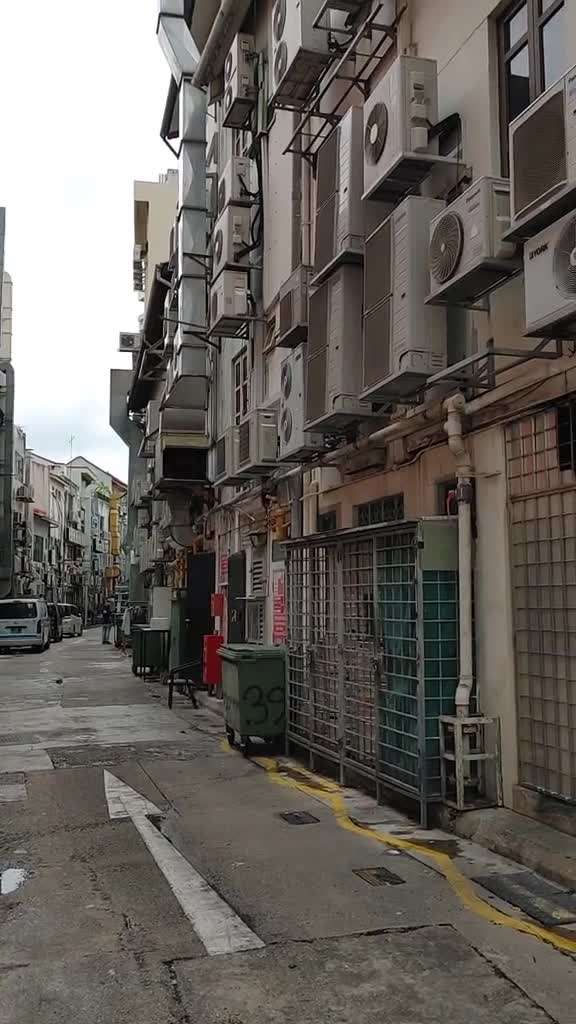
Removed from Unnamed collection
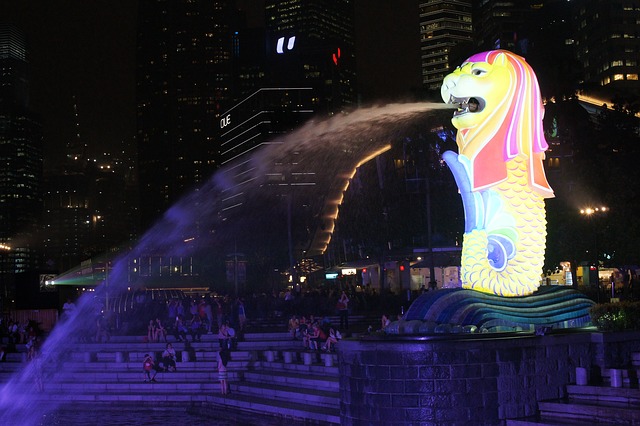
Removed from Unnamed collection
Merlion Park 
You’ve probably seen images of Singapore’s national icon, the mythical Merlion with the head of a lion and the body of a fish.
The Merlion's body symbolises Singapore's humble beginnings as a fishing village when it was called Temasek, which comes from the same root as the word tasek ('lake' in Malay).
Its head represents Singapore’s original name, Singapura, or ‘lion city’ in Malay. Today, you can glimpse this legend at Merlion Park. Spouting water from its mouth, the Merlion statue stands tall at 8.6 metres and weighs 70 tonnes.
This icon is a must-see for tourists visiting Singapore, similar to other significant landmarks around the world. http://www.visitsingapore.com/see-do-singapore/recreation-leisure/viewpoints/merlion-park/
Map
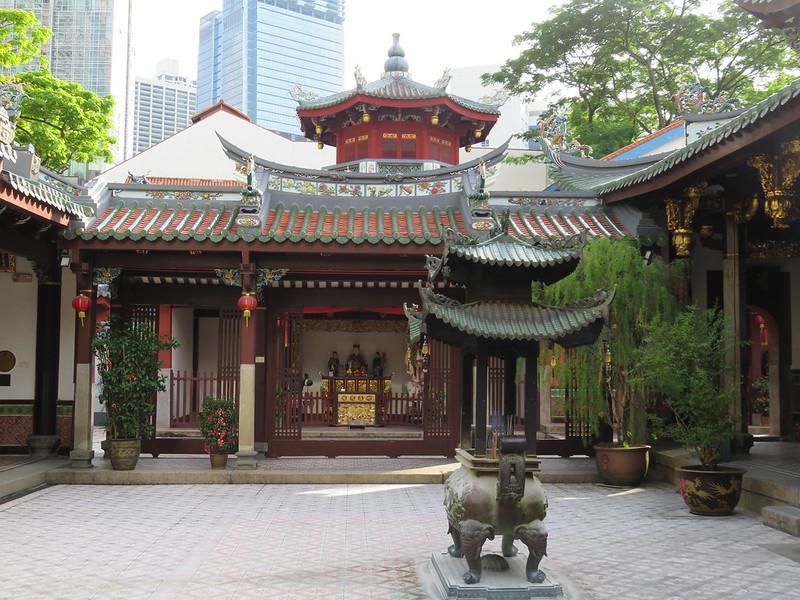
Removed from Unnamed collection
Thian Hock Keng Temple 
Beautifully restored, Thian Hock Keng Temple, which is dedicated to Mazu, the Goddess of the Sea, is the oldest Chinese temple in Singapore.
Built-in 1839 with the support of prominent members of the Hokkien community, such as philanthropist Tan Tock Seng, Thian Hock Keng Temple is Singapore's oldest Chinese temple.
Dedicated to Mazu, the Goddess of the Sea, early Chinese immigrants came here to give thanks for their safe passage across the vast waves of the South China Sea.
At the temple, take in the remarkable architecture in the traditional southern Chinese style.
Keep an eye out for the detailed carvings and sculptures of dragons, phoenixes, and deities, as well as the colorful broken porcelain on the roof ridges, a Fujian decorating technique.
Amazingly, not a single nail was used in the original construction of the temple, which is now a gazetted national monument and managed by the Singapore Hokkien Huay Kuan. http://www.visitsingapore.com/see-do-singapore/culture-heritage/places-of-worship/thian-hock-keng-temple/
Map
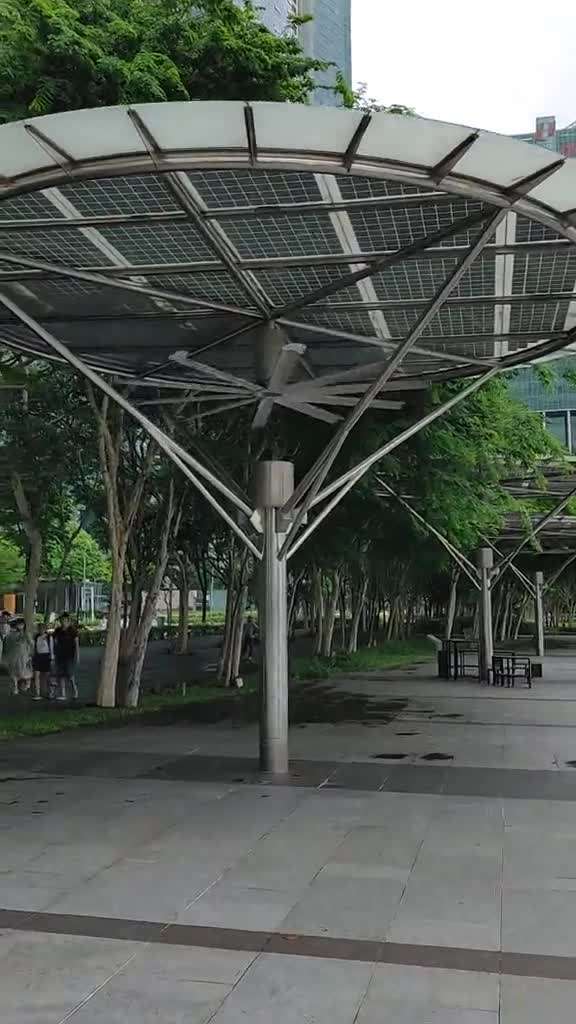
Removed from Unnamed collection





